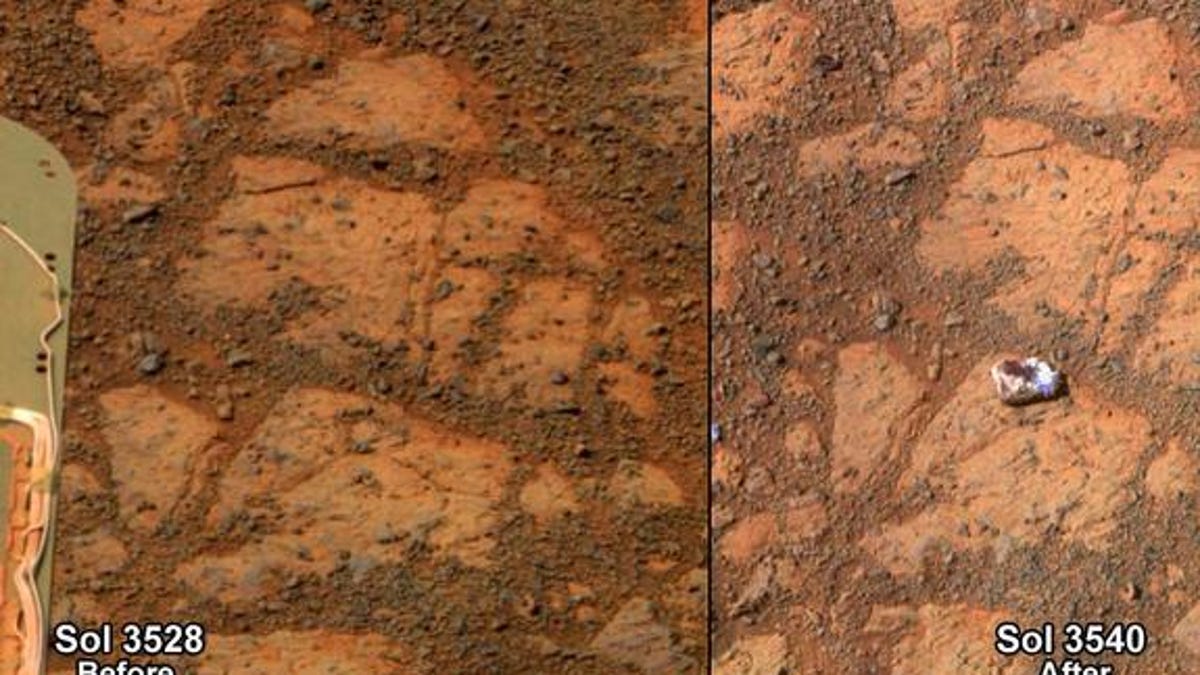Mars 'jelly doughnut' mystery finally solved
Where did the infamous rock that seemed to appear out of nowhere on Mars come from? The explanation, it turns out, is more simple than sci-fi.

A mystery rock which seemed to appear out of nowhere on Mars last month stirred up much speculation among alien enthusiasts, but it appears the mystery is solved. The answer is more simple than sci-fi.
NASA said Friday that the mysterious rock, which resembled a jelly doughnut, is actually just a piece of a larger rock that the Mars Exploration Rover Opportunity drove over in January.
When the Opportunity rover spotted the anomaly on Mars last month, NASA's scientists were baffled. An analysis of the rock with the Opportunity's spectrometer showed a "strange composition, different from anything we have seen before," said Steve Squyres, the principal investigator of the Mars Exploration Rovers.
"It's about the size of a jelly doughnut. It was a total surprise, we were like, 'Wait a second, that wasn't there before, it can't be right. Oh my god! It wasn't there before!' We were absolutely startled," Squyres told Discovery News.
With imaginations running wild, theories abounded as to the origin of the rock, even resulting in a lawsuit to compel NASA to take a closer look at a mysterious Martian object.
But now, researchers have figured it out. The now-infamous Martian rock, dubbed "Pinnacle Island," is a piece of a larger rock broken and moved by the wheel of the Mars rover in early January.
"Once we moved Opportunity a short distance, after inspecting Pinnacle Island, we could see directly uphill an overturned rock that has the same unusual appearance," said Ray Arvidson, deputy principal investigator of Opportunity, in a statement.
Recent images clearly show the original piece of rock which was struck by the rover's wheel, slightly uphill from where Pinnacle Island came to rest. "We drove over it. We can see the track. That's where Pinnacle Island came from," said Arvidson.

